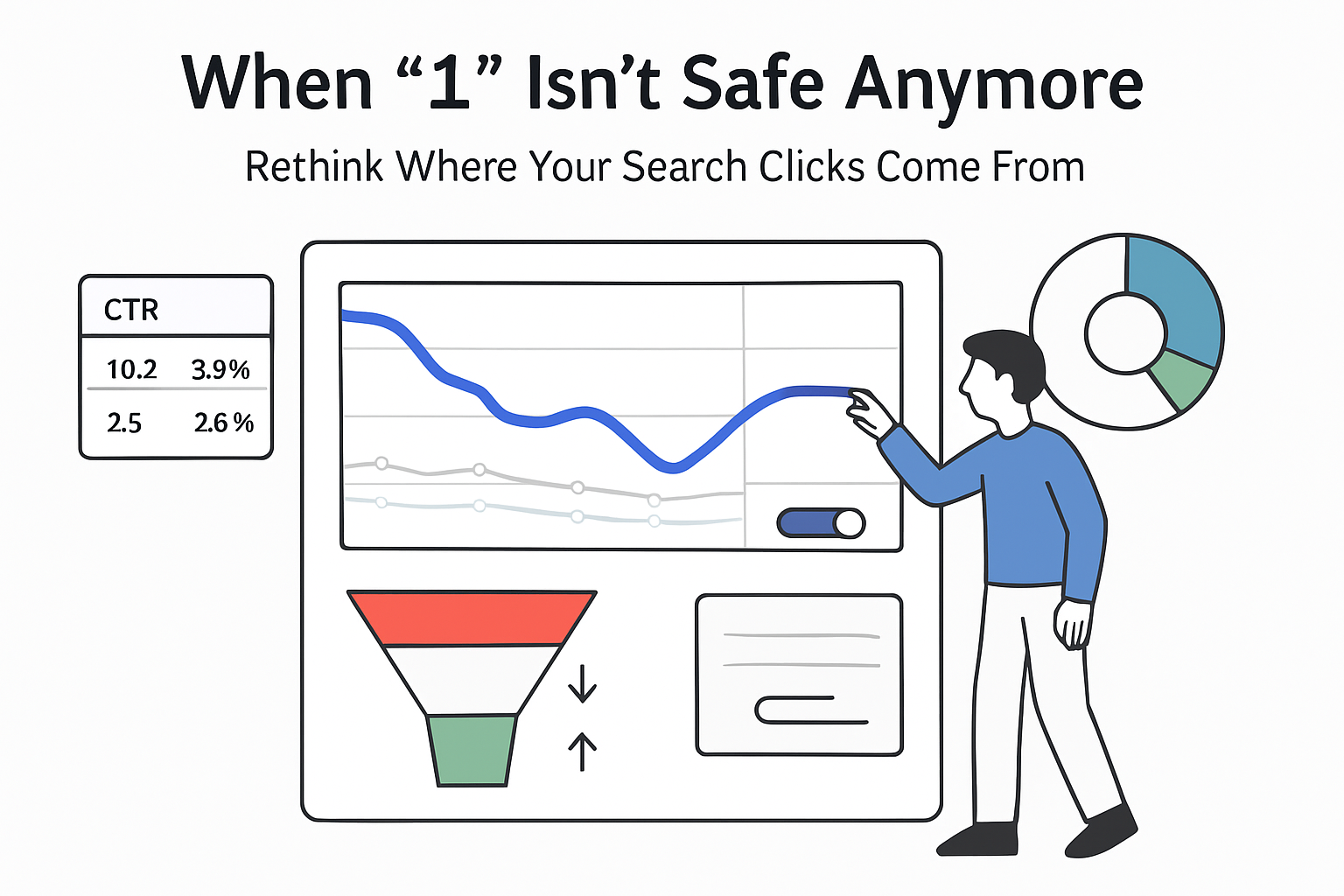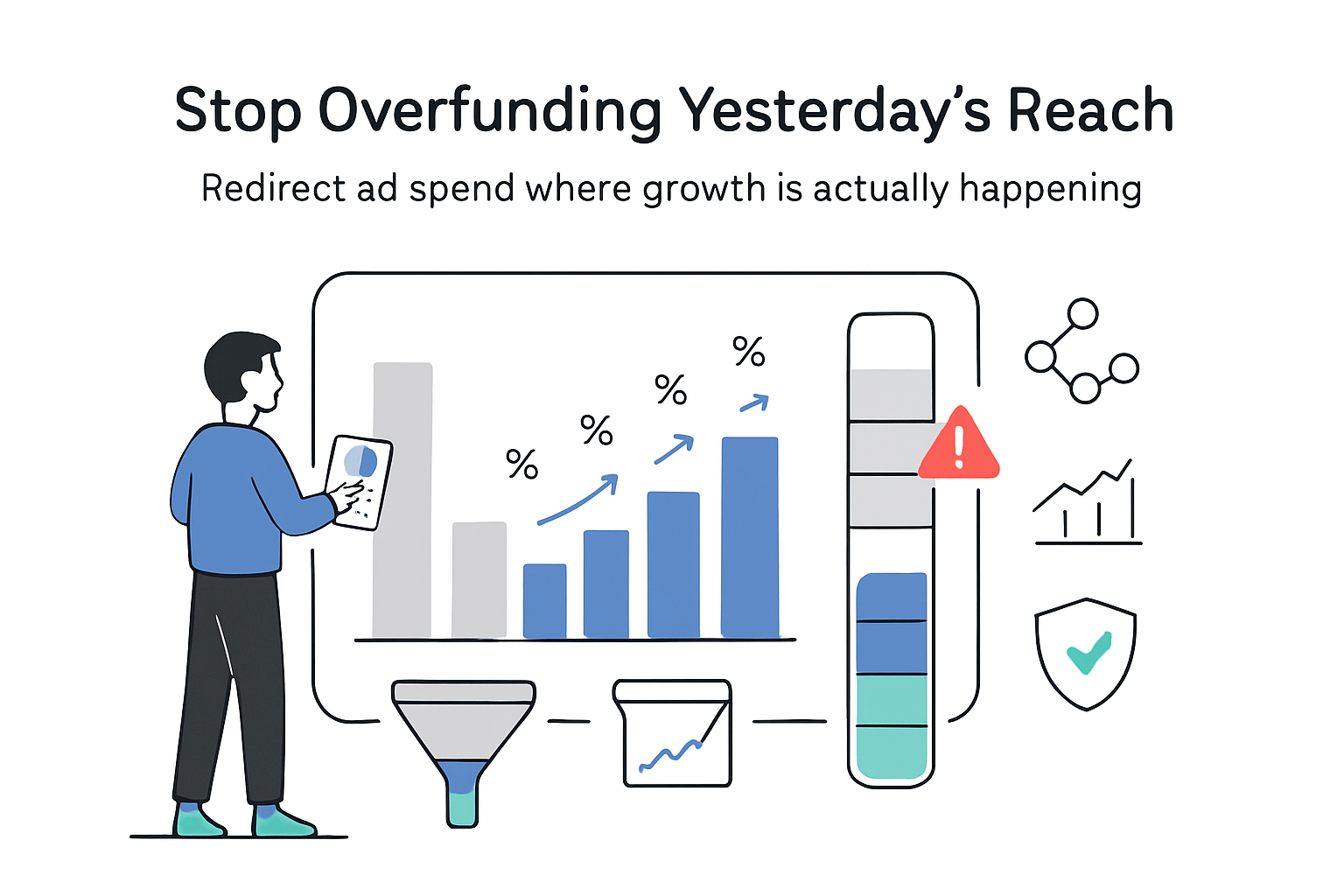How EV charging port availability predictions reshape local and EV marketing
Google’s new AI model for forecasting EV charging port availability looks like a technical footnote, but it directly reshapes how EV drivers use Google Maps for routing and stop choices. The key question: how does predictable charging availability redirect attention, footfall, and ad value around charging locations, and what does that imply for marketers in auto, energy, and local search?
Key Takeaways
For marketers, this change is less about AI novelty and more about how it reallocates demand around charging locations and nearby businesses.
- Short‑horizon port forecasts (30–60 minutes) in Google Maps will concentrate EV driver demand at stations that are predicted to be free soon, increasing the commercial value of those locations for local ads and partnerships.
- A 20–40% reduction in “wrong” availability predictions at peak times [S1] means fewer wasted trips and more trust in EV routing, making Google Maps the default planning interface for many EV journeys, squeezing OEM navigation systems and third‑party charging apps.
- Because the model focuses on large, high‑turnover stations and peak hours, competition for visibility (organic and paid) will heat up most around dense urban hubs, not long‑tail rural sites.
- Regional models (for example, separate ones for California and Germany [S1]) signal that EV usage patterns will be handled locally; marketers should expect different query volumes, day‑parting performance, and creative angles by market.
- This “simple” model likely lowers infrastructure costs for Google, making it easier to roll out more EV‑specific UX and, over time, new monetizable surfaces (sponsored chargers, nearby offers during charge sessions, route‑aware promotions).
Situation Snapshot
This analysis is triggered by Google Research’s announcement of a lightweight linear regression model that predicts the probability a specific EV charging port will be available at a given station a set number of minutes in the future (30–60 minute horizons) [S1]. The model is already deployed in production as part of Google’s existing EV routing work in Maps [S1][S2], surfaced to users through the Google Maps EV features described in the related Keyword Blog Post [S2].
Key facts from the research post:
- Objective: predict the probability that an EV charging port will be available at a specific station H minutes from now (H = 30 or 60) to support EV routing and reduce range anxiety [S1].
- Model: simple linear regression, driven primarily by hour‑of‑day features and station size; alternative models (decision trees, small neural nets) were tested but underperformed on speed and robustness [S1].
- Data: real‑time availability from charging networks; training samples from California and Germany, biased toward larger stations due to higher throughput [S1].
- Baseline: “Keep Current State” (assume the current number of free ports will be the same H minutes ahead). This baseline is already strong because under 10% of ports change state within 30 minutes on the US East Coast [S1].
- Results: compared with the baseline, the model cuts wrong “at least one port free?” predictions by about 20% in morning peaks and about 40% in evening peaks, for stations with at least six ports and 30–60 minute horizons [S1].
- Deployment choices: separate models by region (for example, California vs. Germany) deliver better performance than a unified global model [S1].
These are direct statements from Google; downstream product decisions and monetization layers are not described and need to be inferred separately.
Breakdown & Mechanics
Model logic in plain terms
- Inputs:
- Current number of free ports at a station.
- Station size (number of ports).
- Hour‑of‑day indicators (each hour has a learned weight).
- Region‑specific parameters (for example, patterns for California vs. Germany).
- The model learns hour‑based “change rates”:
- Positive weight at 7 a.m. → ports tend to fill during that time.
- Negative weight at 5 p.m. → ports tend to free up.
- Prediction mechanism (conceptual):
- Current free ports + (hourly change rate × time horizon × station size) → expected free ports at H minutes.
- Then converted to a probability that at least one port is free.
The decision rule in Maps is effectively:
- Current status OK + predicted low change → keep the current station in the route.
- Current status OK + predicted high fill‑up rate → warn the user or reroute to a different station.
- Current status busy + predicted freeing of ports → suggest waiting or routing there anyway.
Platform and behavioral mechanics
This sets up a chain like:
Better short‑term availability predictions → fewer wasted trips to full chargers and shorter waits → higher trust in Google Maps for EV trips → more EV journeys planned through Google’s interface → more EV‑specific queries and impressions around charging stops and nearby venues.
Because the model is extremely lightweight, Google can serve these predictions with low latency at global scale without sharply increasing infrastructure cost. That makes it easier for Maps to show dynamic, route‑aware EV insights in many countries, not just a few marquee markets.
For marketers, the operational detail that matters most is when the model actually changes user outcomes: large stations during peak change periods. At those moments the system will actively steer traffic toward or away from specific locations, with direct consequences for who gets the visit, the transaction, and the ad impression.
Impact Assessment
Local SEO & Google Business Profiles (charging networks and nearby venues)
- Direction: higher stakes at large, urban charging hubs; moderate change elsewhere.
- Mechanism:
- EV routing in Maps will preferentially surface stations where the model predicts “at least one port free” with reasonable confidence.
- That increases the share of EV drivers arriving at these hubs versus smaller, unmodeled, or always‑busy locations.
- Winners:
- Charging operators with:
- Many ports at a site (since the model amplifies change with station size) [S1].
- Clean, real‑time data feeds into Google’s ecosystem.
- Nearby businesses (food, retail, services) that appear prominently in the “around your charger” map view.
- Charging operators with:
- Losers:
- Single‑ or low‑port chargers with noisy availability data, especially in competitive urban areas.
- Businesses near stations that regularly show as occupied; Maps may route drivers elsewhere, cutting incidental footfall.
- Actions / watchpoints:
- Ensure charging locations are properly categorized and consistent in Google Business Profiles; missing or messy listings become more expensive as routing nudges more demand.
- For venues near major charging hubs, invest in strong photos, up‑to‑date menu or product data, and reviews. Drivers with 30–60 minutes to wait are prime candidates for nearby discovery decisions.
Paid Search & Local Ads
- Direction: more monetizable EV‑related map views; stronger day‑part effects.
- Mechanism:
- As EV routing usage grows, more high‑intent sessions will live inside Maps rather than in generic “EV charger near me” web search.
- Google already surfaces Local Search Ads within Maps; EV routing views are a natural fit for sponsored chargers or nearby services.
- Short‑term effects (2025–2026, evidence‑based plus moderate inference):
- Higher impression density on EV‑heavy corridors in morning and evening peaks, where prediction gains are largest (20–40% fewer mispredictions) [S1].
- Better alignment between ad exposure and actual availability: if Maps believes a station will be free soon, any sponsored placement for that site or its amenities becomes more relevant and more likely to convert.
- Likely winners:
- Charging networks with budgets to promote preferred locations during high‑demand windows.
- Quick‑service restaurants, coffee chains, and convenience stores using location‑based formats near busy charging hubs.
- Likely losers:
- Advertisers relying only on generic EV or charging keywords in classic search campaigns; a larger slice of intent may never hit the standard SERP as routing happens in Maps.
Auto OEMs, EV brands, and apps
- Direction: more difficulty keeping users inside OEM navigation or standalone charging apps.
- Mechanism:
- Google’s model partially addresses one of the main reasons to use a dedicated charging app: “Which station will actually have an open port when I arrive?”
- If Maps answers that with reasonable accuracy and minimal effort, many EV drivers will standardize on Google for everyday trips.
- Winners:
- OEMs that integrate Google‑native experiences (Android Automotive, Google‑powered infotainment), accept that Maps is the front end, and then use their marketing to build services on top (subscriptions, charging bundles, loyalty).
- Losers:
- Standalone charging and routing apps whose main unique selling point was more reliable station availability; their differentiation narrows.
Operations and analytics for charging networks
- Direction: stronger link between operational reliability and marketing performance.
- Mechanism:
- The model’s gains depend on accurate, timely data from charging networks.
- Poor telemetry means worse predictions, which in turn means Maps may quietly prefer other stations at route‑planning time.
- Implication:
- Marketing metrics (visits, app adoption, loyalty program joins) will increasingly reflect how good a network’s data and uptime are, not just its media or promotions.
Scenarios & Probabilities
These scenarios combine the documented technology change with reasonable, flagged inference about product and monetization paths.
-
Base scenario - EV routing with availability becomes a quiet default (Likely, ~60–70%)
- Google continues rolling this model into more regions and EV routing flows.
- No dramatic new ad products, but EV‑related map views and Local Search Ads impressions steadily grow where EV adoption is high.
- For marketers, this feels like an incremental shift: charging hubs and nearby venues see rising importance in location strategies and budgets.
-
Upside scenario - new EV‑specific ad and partnership formats (Possible, ~20–30%)
- Google introduces:
- Sponsored charger placements within the route planner.
- “While you charge” offer units highlighting partner restaurants or retail near predicted‑available stations.
- Co‑branded experiences with OEMs or utilities.
- If this happens, paid visibility around selected hubs could become expensive and strategic, similar to airport or transit inventory.
- Google introduces:
-
Downside scenario - data or trust issues limit impact (Edge, <10%)
- Real‑time feeds from some networks remain unreliable or subject to commercial friction.
- Users still experience enough mismatches (“Google said it was free, it’s not”) that trust does not grow as expected.
- In this case, OEM navigation, dedicated charging apps, or closed‑loop ecosystems (for example, Tesla’s) remain primary for many users, softening the impact on mainstream marketing plans.
Risks, Unknowns, Limitations
- Coverage gaps and bias toward large stations: the research focuses on stations with at least six ports in urban‑style conditions [S1]. Rural or low‑port sites may not benefit similarly, and their routing prominence remains uncertain.
- Lack of published absolute error rates: the public data gives relative improvements (20–40% reduction in bad predictions at certain times) but not full error curves. If absolute error remains high in some contexts, user‑perceived gain could be modest.
- Unclear monetization roadmap: Google has not publicly tied this model to any new ad formats [S1][S2]. Any discussion of sponsored chargers, EV‑specific ad units, or OEM integrations is speculative.
- Regulatory and privacy questions: use of real‑time infrastructure data, and any future combination with driver behavior data, may be constrained differently by region. Stronger regulation could slow some advanced use cases.
- Dependence on partner data quality: if charging networks fail to maintain reliable telemetry, predictions degrade. That would weaken both UX gains and any commercial products layered on them.
- Potential falsifiers for this analysis:
- Google explicitly stating that EV availability predictions will not be used in any commercial or ranking decisions beyond basic UX.
- Empirical campaign data showing that EV‑related Maps impressions and nearby‑business visits do not increase in high‑EV markets despite model deployment.
Sources
- [S1] Google Research (Kostas Kollias), Nov 2025, blog post - “Reducing EV range anxiety: How a simple AI model predicts port availability.”
- [S2] Google Keyword Blog, Nov 2025, product update - Keyword Blog Post “Holiday Gemini tips and new Explore tab” (includes announcement of EV routing and charging‑related features in Google Maps).








.svg)